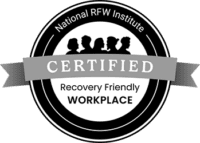Virtual Assistance: The Future of Child Welfare Is NOW
With limited hours and bandwidth, foster families, child welfare agency (CWA) staff, and service providers face an intense battle against time, juggling critical responsibilities essential for child safety and family support. The challenge of managing these demands has persisted for decades and has only intensified because of the pandemic. Despite the successful deployment of virtual assistance in various industries, the potential to streamline and enhance child welfare operations through virtual assistance remains largely untapped. Isn’t it time to harness the power of virtual assistance for child welfare?
Addressing Challenges in Child Welfare
Caseworkers are burdened with high caseloads of 20, 30, or even 40 at one time; this makes it challenging to maintain meaningful contact with families within a typical 40-hour workweek. Providers are limited to one to two hours weekly to meet with children and families, which is barely enough to sustain progress from one session to the next. Child welfare families must manage childcare, home maintenance, and personal commitments in the remaining time after work and sleep alongside the added stress and time commitment of child welfare meetings and court hearings. This often leads to burnout and high stress.
Despite the significant challenges that both birth and foster families face in child welfare, the struggles of the staff are equally demanding. Administrative burdens, such as extensive documentation and compliance requirements, consume a considerable portion of their time, leaving less time for direct engagement with families. The emotional toll of witnessing and addressing the trauma and hardships experienced by children and families can lead to compassion fatigue. Additionally, the constant pressure to ensure the safety and well-being of children, combined with insufficient resources and support, often results in burnout and high turnover rates among staff.
Key challenges include:
- Navigating Responsibilities and Scrutiny: Both families and caseworkers face intense pressures from regulatory bodies, the public, and other stakeholders, adding complexity to child welfare management.
- Limited Time and High Caseloads: Caseworkers struggle to provide focused attention to each case due to overwhelming caseload numbers and limited time.
- Emotional Strain and Staff Turnover: The demanding nature of the work and poor work/life balance leads to high rates of burnout and frequent CWA staff turnover.
- Trauma and Complex Family Dynamics: Many children, families, and caseworkers involved in the child welfare system have experienced trauma themselves, complicating their emotional and psychological well-being and making intervention challenging.
Navigating the intricate challenges of child welfare requires innovative solutions. Advancements in technology offer promising avenues for support. In this context, the revolutionary potential of artificial intelligence (AI) becomes particularly relevant.
AI Value Across Industries
Ranging from finance to manufacturing, technology and AI have revolutionized the way tasks are performed. As a result, outcomes have improved, showcasing the transformative potential of these tools.
In finance, AI performs automated trading and fraud detection, processing vast amounts of data at speeds unattainable by humans. In customer service, AI-powered virtual assistants handle inquiries around the clock, enhancing customer satisfaction with immediate responses.
Similarly, AI in manufacturing predicts equipment failures and optimizes production lines, significantly reducing downtime and maintenance costs. These examples illustrate AI’s potential to transform operations and innovate across diverse fields.
Building on these advancements, GoMo Health leverages cutting-edge AI and the latest research in human motivation and brain development to enhance virtual assistance in healthcare and child welfare.
Virtual Assistant Program
The GoMo Health Virtual Assistant program works by meeting users where they are and supporting them through information sharing, enhancing decision-making skills, and guidance toward achievable actions. The program offers numerous benefits for CWA staff and families, providing consistent engagement, real-time connections, and proactive interventions. It supports various needs through a structured process, beginning with the enrollment of specific groups and continuing with tailored support based on individual feedback.
The program also connects health and social service providers—both clinical and non-clinical—to facilitate direct referrals as needed. This integration ensures that families receive comprehensive in-the-moment support aligned with their specific needs. To monitor and evaluate the effectiveness of the virtual assistant program, a user-friendly reporting center is available. This center compiles data and metrics related to key performance indicators (KPIs), providing insights into the impact of the program on enhancing family support, improving response times, and fostering better outcomes within the child welfare system.
The Virtual Assistant program:
- Fosters resilience and positive youth development
- Increases resource awareness and utilization
- Reduces emergency department (ED) visits
- Improves care coordination efficiency
- Delivers timely, personalized interventions
- Improves family and social connections
- Reduces healthcare costs
- Enhances beneficiary/provider satisfaction
- Centralizes communication and support
- Cultivates mental and emotional resilience through continuous engagement
The Science Behind the Virtual Assistant Program
The GoMo Health Virtual Assistant program utilizes a personalized science of engagement, BehavioralRx®, to deliver targeted, evidence-based, informed interventions, enhancing engagement and outcomes. This approach uses behavioral psychology to foster trust and encourage healthier behaviors, and cognitive neuroscience to help develop lasting habits through timely support.
BehavioralRx science supports the Virtual Assistant program by encouraging new behaviors through short, focused content that aligns with natural learning processes. This continuous engagement helps form new neural pathways, turning positive behaviors into automatic responses. The personalized messages, care content, and support strategies are tailored to individual needs, promoting sustained behavior changes.
The program supports these changes by providing personalized guidance in real time. Using AI and secure messaging, the program delivers tailored interventions and reminders, ensuring timely support. Continuous engagement means regular communication, which supports keeping individuals on track with their CWA goals. The addition of psychosocial support reduces stress and feelings of isolation, boosting motivation and resilience.
By applying BehavioralRx science to foster care, welfare, and social services using the Virtual Assistant program, the quality of life for CWA staff, caregivers, and youth within these systems is greatly enhanced. This science supports family unit preservation, prevents out-of-home placements, and assists caregivers with health knowledge and early intervention tools.
Case Study Insights:
Virtual Assistant Integration to Manage Complex Cases
Case Study Insights Summary
Both case studies illustrate the profound impact that targeted, technology-enhanced interventions can have on complex health and social issues, demonstrating substantial benefits for individuals and communities alike. These insights not only reinforce the effectiveness of the Virtual Assistant programs but also highlight the potential to transform care delivery and support within the child welfare and healthcare systems.
Case Study No. 1: Autism Early Detection With Amerigroup Community Care of Georgia
Amerigroup Community Care of Georgia has partnered with GoMo Health to launch an Early Intervention Virtual Assistant program specifically tailored for families with children aged zero to four and those with a child already diagnosed with autism spectrum disorder (ASD).
This innovative program supports caregivers by:
- Aiding in the early detection of ASD
- Providing timely access to crucial resources
- Offering ongoing psychosocial support to ease the burden on caregivers.
This evidence-based digital therapeutic integrates behavioral science principles to ensure caregivers adhere to appropriate autism screenings and milestone tracking. Upon a child’s enrollment, caregivers receive:
- Personalized SMS messages supporting the monitoring of key developmental milestones
- Reminders for pediatric screening appointments
- Content delivery across four main categories—general autism information, educational resources, caregiver stress management, and activities of daily living (ADL)—to support the physical and emotional management of an autism diagnosis.
Results:
| Enrollment and Engagement | Retention Rate |
|
99.6% retention rate |
Case Study No. 2: Substance Use Treatment with Rimrock
Rimrock, Montana’s largest treatment facility for adults with substance use and co-occurring disorders, leverages the Recovery Pathways program developed in collaboration with GoMo Health. Originally implemented for participants in seven different treatment courts, the program’s success led to an expansion across all the Rimrock outpatient substance use disorder and mental health programs.
The goals of Recovery Pathways include addressing social determinants of health, enhancing therapeutic engagement beyond in-person sessions, reducing relapse rates, and increasing program completion rates. The program emphasizes a holistic approach that respects the personal circumstances of each patient and delivers tailored support through personalized messages, care content, surveys, and Chat for up to one year post-treatment.
Key program outcomes include:
| Retention and Relapse | Employment and Safety | Mental Health and Completion | Legal Outcomes |
|
|
|
Zero re-arrests among participants (significantly outperforming the national recidivism rate which is approximately 16.4% within the first year and 27.5% within two years, highlighting the program’s effectiveness in supporting long-term recovery and integration into society) |
Implications and Benefits of Virtual Assistant Integration in the CWA Field
The integration of the Virtual Assistant program in child welfare promises to revolutionize the field by maximizing efficiency, enhancing data analysis, and supporting professionals through scalable, personalized interventions. This program, along with strategic AI implementation, offers the potential for significant improvements in operational efficiency and quality of care, benefiting CWA staff and the families they support:
| Enhanced Support and Trust | Ensures families and staff feel continuously supported, fitting seamlessly into their schedules and providing real-time connections with easily digestible, bite-sized information when needed most |
| Crisis Management and Proactive Care | Offers prompt responses in critical situations, which may reduce ED visits and aid in monitoring emerging needs for proactive crisis intervention |
| Operational Efficiency and Privacy | Streamlines daily operations with a virtual infrastructure that improves staff workload and caseload management while respecting family privacy and preferences
Provides ongoing training and updates for caseworkers, all of which are essential for effectively managing the limited 168 available weekly hours |
| CWA Staff Development and Data Insights | Enhances job satisfaction and effectiveness by providing accessible resources and virtual companionship
Generates crucial data insights for improving service delivery and outcomes |
| Innovative Outcomes | Leverages technology, AI, and behavioral science to significantly enhance outcomes |
| Recruitment and Retention | Aids in recruiting and retaining CWA staff and foster families |
| Impactful Interventions | Introduces new methods that positively affect family interventions |
| Scalability and Diversity | Effectively scales to diverse populations, ranging from 10 to over a million users |
These features not only enhance care effectiveness but also substantially improve outcomes for all parties involved. This underscores the transformative potential of virtual assistant technologies in revolutionizing child welfare practices.
To learn more, visit https://gomohealth.com/child-welfare-system-and-foster-care/.







Find Us Online